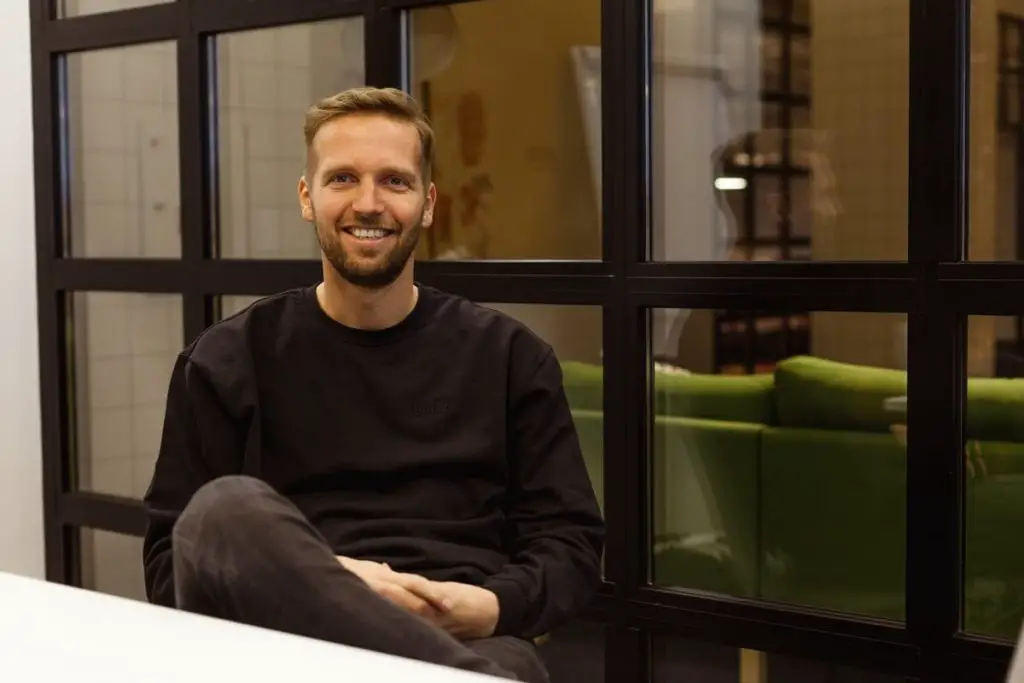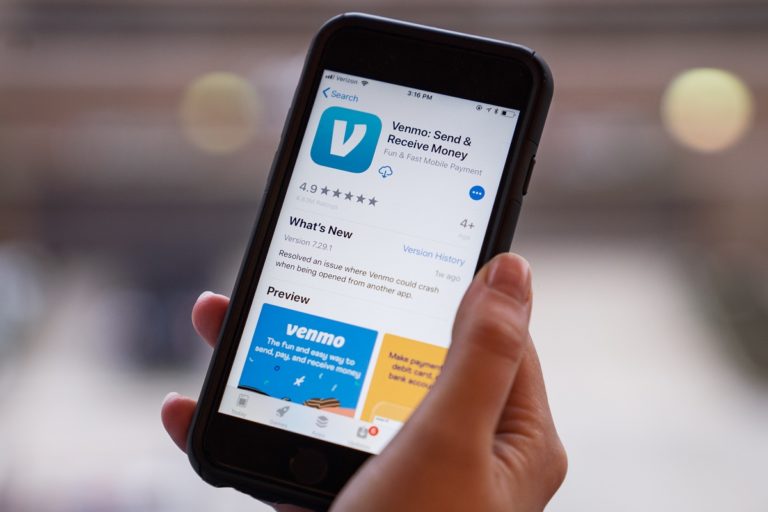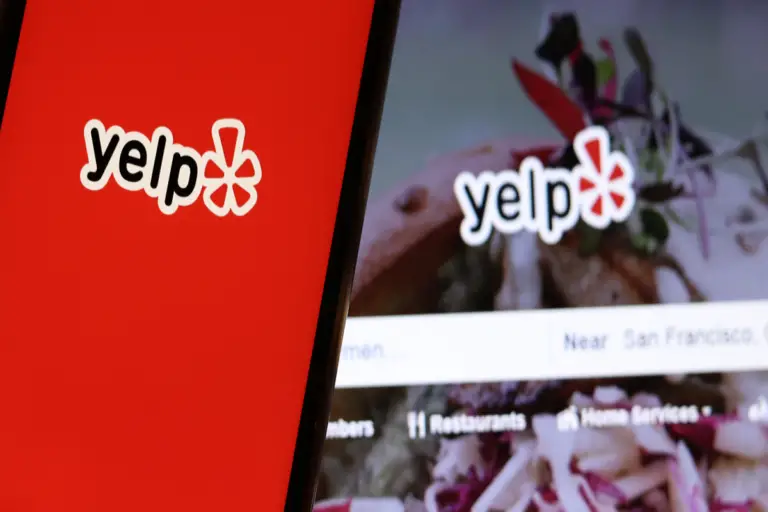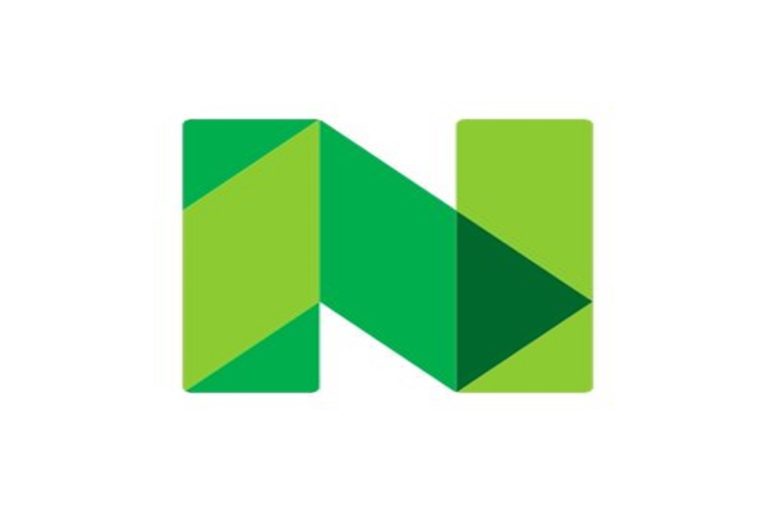How does Vinted make money? – The Vinted Business Model
Do you want to know what the Vinted Business Model is and how does Vinted makes money? If so, you are in the right place! Let’s dive right into it.
Vinted: Company Profile
What is Vinted?
Vinted is an e-commerce platform which is based in Vilnius, Lithuania. It is a marketplace for buying and selling used clothes and accessories. Users can also sell their own used clothing for women, men and children. Men also buy and sell clothes on Vinted. However, more women than men are selling clothes on Vinted now.

Vinted’s main focus, as the name suggests, is on vintage or pre-owned clothing. Re-selling old clothes is a great way to recycle! You can save money by buying used items and also selling clothing.
You also help the environment because there’s less waste going into landfills. Vinted helps people reduce their carbon footprints by not creating new items but reusing old ones instead.
Vinted has gained success worldwide, and the Vinted business model enables global consumers to make second-hand their first option making a name for itself in the world of fashion. The website offers free shipping, returns, and easy payment options.
Vinted charges a fee based on promotion for the type of item being sold. Users can gain more exposure for their items with Wardrobe Spotlight and Item Bump.
How was Vinted started?
Vinted was founded in 2008 by Milda Mitkute and Justas Janauskas in Vilnius, Lithuania.

Mitkute was a shy person who had learned one important rule, not to follow others and lose her individuality. She was invested in forming her dreams and understanding herself. Her father had died when she was six, and she grew up with her mother, sister and grandmother.
Mitkute’s grandmother believed that education was the key to a successful future and encouraged Mikute to study hard and be at the top of her class.
Mitkute had never dreamed of being a businesswoman. When she moved from her native town to the capital to study, she moved her whole closet. Mitkute realized that she had many things that she didn’t wear anymore.
Many items still had the tags on, or she had worn them only a couple of times. She had lots of stuff in her closet, but it still seemed that she had nothing to wear. She then thought that she must not be the only girl in this situation. And she was right.
A few days later, Mitkute was invited to a housewarming party, where she met Janauskas. She mentioned her idea for an online marketplace to sell fashionable used clothing to Janauskas, a software engineer at that time.
The idea for Vinted was born from this spontaneous conversation. Although it could have stayed as an idea, Mitkute and Janauskas were so passionate about the idea that they wanted to try it out. They realized the need for a prototype to sell used clothes.
Within a few weeks, Janauskas and Mitkutte created a prototype for an online marketplace where people could exchange pre-owned clothing.
Vinted was an unexpected success right from the beginning. Members were joining every hour, and media coverage was excellent. News portals, radio stations were calling Mitkute asking for interviews. It was then that they realized that they had started something big.
Mitkute’s simple idea created a billion-dollar business. Her company doesn’t contribute to the global pollution problem by throwing out perfectly good clothes. Instead, it encourages people to recycle.
They help people save money by selling second-hand items. Their main goal is to ensure that everyone has access to affordable fashion.
Vinted then extended the site into Germany, where it runs as Kleiderkreisel these days. France and Germany are the top two countries using Vinted.
Vinted was expanded into the United States in 2010. After about two years, the company launched a mobile app on Android and iOS to complement the desktop version. Vinted now allows users in 12 different countries to sell, buy and trade clothing. Today, the company has a community of around 37 million people that includes both men and women.
How does Vinted work?
Users can choose from three main categories: Children, Men, and Women.
You can sell the following items:
- Dresses, sweaters, jeans, skirts, baby clothing, etc.
- Footwear such as heels, sandals, boots, flip-flops, etc.
- Backpacks, handbags, shoulder bags, fanny packs, etc.
- Any accessory that may include watches, sunglasses, belts, hats, jewelry, and so on.
- Beauty products are also included, such as makeup, perfume, hair and nail care.
Once users find items they wish to buy at reasonable rates, they can purchase them. Vinted issues a prepaid shipping label, and the seller can then ship the item. Vinted ensures that the customer gets quality products delivered on time.
Vinted handles all the payments as well as the refunds. Thus, to use Vinted, users need to create a Vinted account. Once you have the account, you can sell or buy items on the marketplace.
Vinted does not charge the sellers any commission. However, various paid promotional tools can be used by the sellers for advertising their listings.
Vinted’s growth
Lithuanian unicorn startup company Vinted started as an incredibly successful business run by Mitkute, a female entrepreneur. Vinted launched in Germany in 2009, one year after its Lithuanian launch. What had once been a local business was now a potentially global business, and it completely changed the mindset of Mitkute and Janauskas.
Mantas Mikuckas, an investor in Vinted, initially joined as an investor, but after seeing Vinted, he was passionate about the idea, so he joined as a full-time employee. Mikuckas brought in the know-how to take Vinted global. Moreover, Accel Partners invested in Vinted and gave Vinted the freedom to scale the idea globally much faster and enter new markets in a short time.
As a female-owned company, Vinted overgrew, but it has not been without growing pains. By 2016 Vinted was close to becoming bankrupt as it burned cash at an insane rate. Investors then hired Thomas Plantenga to turn the company around.

Plantenga changed the business model in 2016 to lower the costs and make it possible for all users to list clothes, which brought about a dramatic change in Vinted’s growth. Vinted removed all listing fees and scaled back on its pricey international expansion strategy. Vinted has become a significant player in the fashion industry as the market for second-hand clothing is booming.
Vinted Statistics
Vinted’s users: Vinted has 37 million active users across the globe.
Vinted’s employees: Vinted has 773 employees.
Vinted’s revenue: According to the latest report, Vinted’s revenue was $38.9 million in 2018. They don’t need to make their annual reports public because they are a private company.
Vinted’s valuation: Crunchbase shows that Vinted has raised over $562.3M in total VC funding. Investors include Lightspeed Venture Partners, Insight Partners, Burda Principal Investments, and Sprints Capital. Vinted is now valued at a cool $4.2 billion after closing an all-equity round of $303 million.
So how does Vinted make money?
How does Vinted make money?
As of 2022, the Vinted app has over 45 million users. This app is free to download and use. It has a revenue model that makes money in three different ways:
Buyer Protection Services
When buyers order through Vinted, they are charged a buyer protection fee. Every buyer mandatorily has to pay this fee. This fee is charged to protect buyers from some major issues during the shipment, such as: they may receive damaged items, in shipment some things may be lost, the things they receive may be different from the ones buyers described, fraud, and much more. Vinted’s buyer protection fee is between 3-8% of the item’s price plus $0.42-$1.11. Vinted compensates sellers for commission free purchases by making the buyer protection fees mandatory. Thus, this is one of the significant ways Vinted makes money.
Promoted Listings
Another way through which Vinted makes money is through promoted listings. Vinted does not charge the sellers selling fees or any commission on sales. It makes money by offering sellers various promotional tools.
Promotion is a vital strategy to become successful in any business. These promotional tools help the sellers in making their listings more visible. The Wardrobe Spotlight service and Item Bumps are two of Vinted’s significant promoted listing tools. If a seller purchases bumps, Vinted will promote their listing for about three consecutive days or till that item is sold.
Wardrobe spotlights enable the promotion of sellers’ listing for seven consecutive days. The wardrobe spotlight fee is usually $9.66 per wardrobe spotlight, while that of the bumping listed items is $1.32 per bump. Thus, the promoted listing is an essential way Vinted makes money.
Third-Party Advertising
Another important Vinted revenue model is advertising. On the listing pages and newsfeed of Vinted’s website, third-party ad networks can serve up different ads.
Shipping Costs
When ordering from Vinted, the buyers are expected to pay shipping costs. The shipping costs may differ for the different kinds of shipping services the buyer uses. It also depends on the size of the shipment.
Final Thoughts
Vinted has established a model of high trust, low cost and has managed to grow and bring about change. Our current consumption model is unsustainable, and Vinted tries to make sustainable consumption as easy as possible.
Instead of throwing away something you no longer wear, you can sell it through Vinted. We hope this article has given you insights into the Vintage business model and answered how does Vinted make money.
Frequently asked questions about Vinted
What is Vinted?
Vinted is an e-commerce platform which is based in Vilnius, Lithuania. It is a peer-to-peer e-commerce platform for pre-owned clothing and accessories.
Is Vinted a free app?
Vinted is a free app that can be accessed and used by anyone.
How many users does Vinted have?
Vinted has 37 million active users across the globe.
How does Vinted make money?
Vinted’s revenue model is to earn money through buyer protection fees,Promoted listings, third party advertising and shipping charges. Vinted makes money through the advertising-based and fee-for-services (FFS) business models.
Other Business Models: OfferUp, Honey, Venmo, DoorDash, Discord, Zelle, Craigslist, Nerdwallet, Afterpay, Zoom, WeBull, Hinge, Bumble








